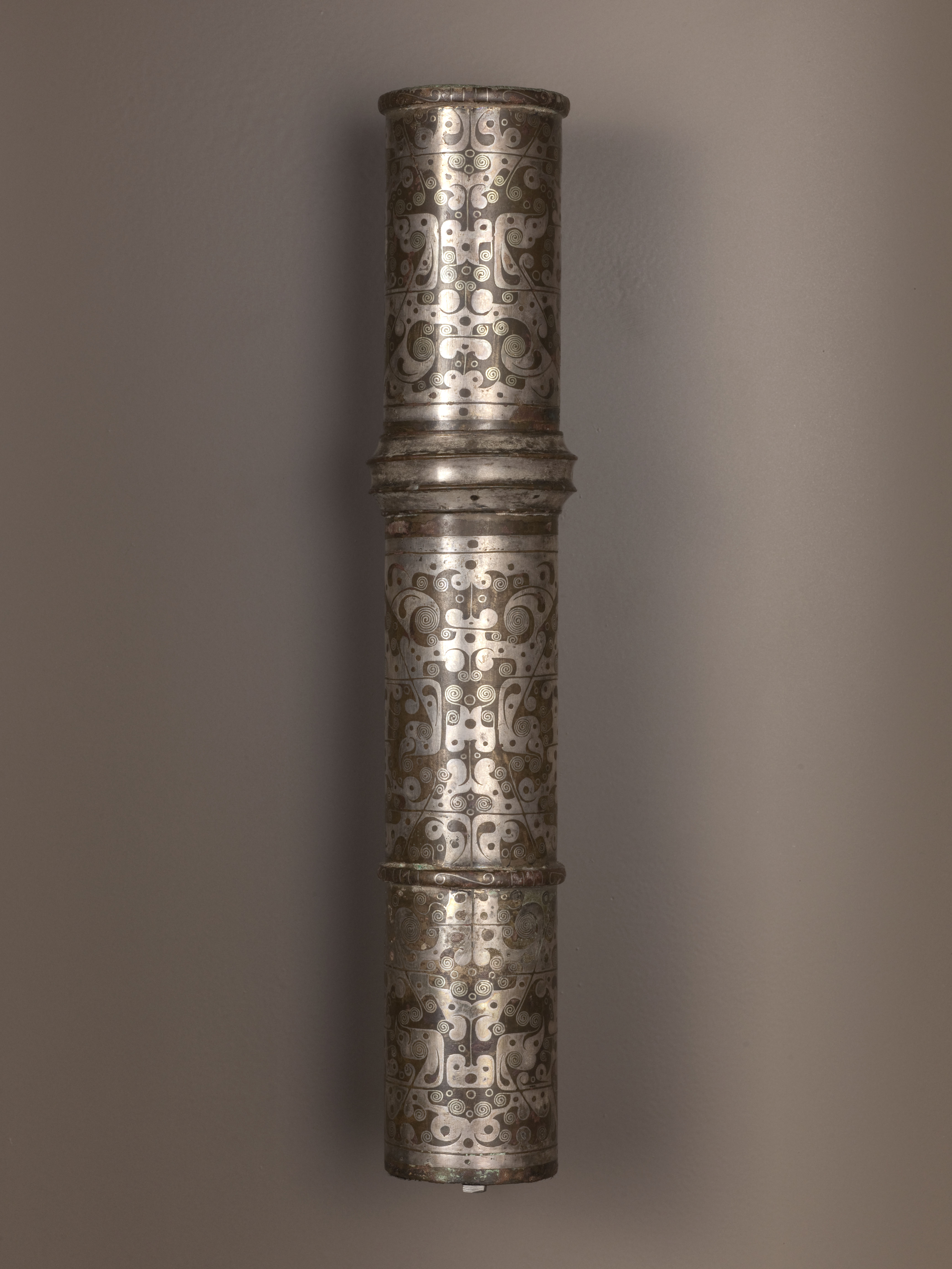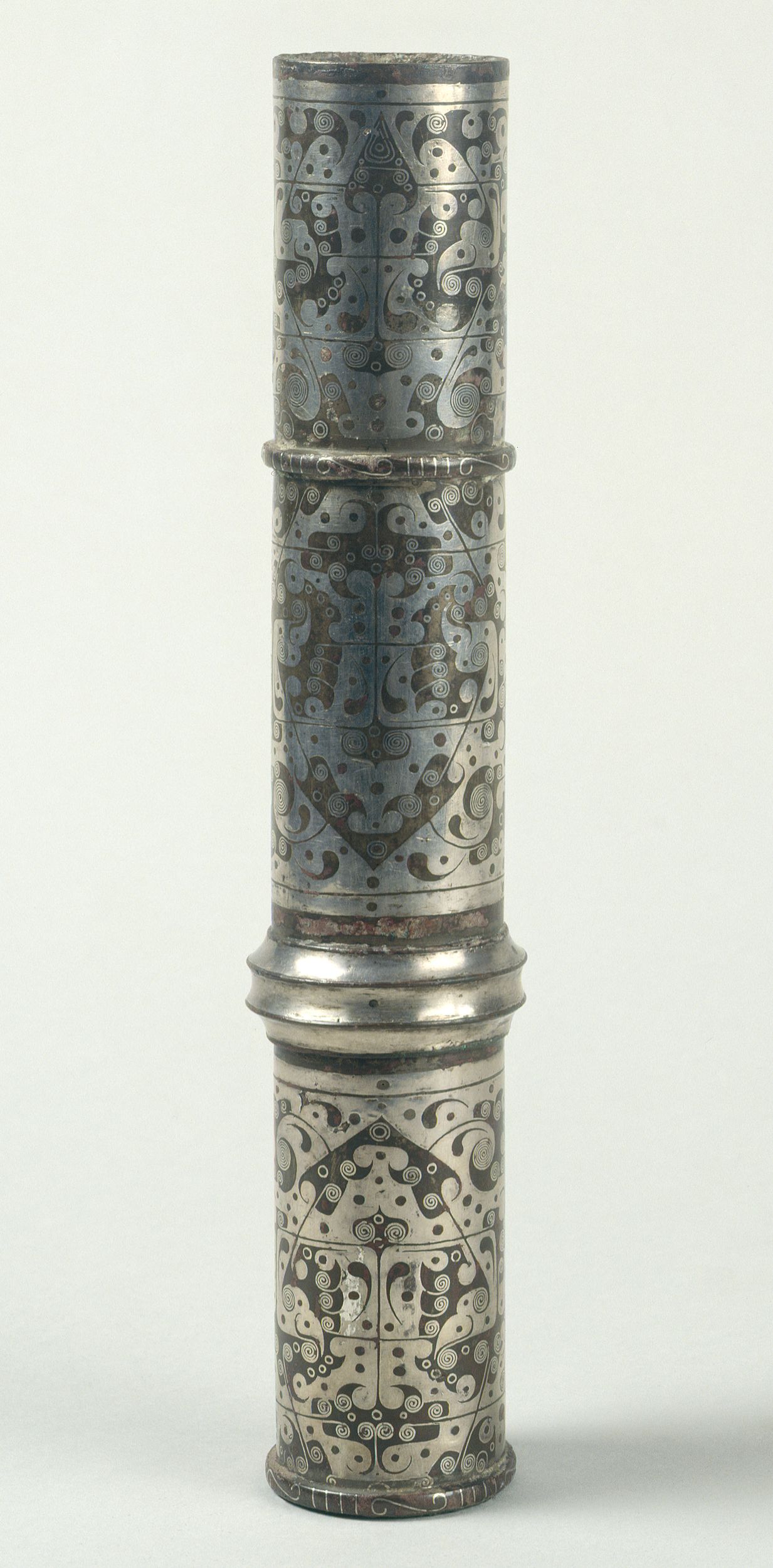
Tube
Bronze, Incrustation
Achat
M.C. 10041
This cylindrical ornament probably adorned the lower end of a handle of a parasol used to protect the driver of a coach and its owner. It features a sumptuous openwork design in a rigorously symmetrical arrangement. Similar ornamentation features on items found at Fuling in Sichuan.
Beyond any stylistic differences that may have existed between regional workshops, it is tempting to see in this rigorous arrangement of motifs a clue to the item’s dating. Such works may date from the late Warring States period (481-221 BC), or the Qin dynasty (221-207 BC), but more likely from the early Western Han dynasty (206 BC-AD 9).
Many similar works exist: examples include the famous tube from the Eumorfopoulos collection, which entered the British Museum with the Seligman Bequest (inv. OA 1973-7-23-46), and one in the Saint Louis Art Museum.
Gilles Béguin, Activités du musée Cernuschi, Arts asiatiques, 2000, t.55, p. 156-157.
Osvald Sirèn, Histoire des Arts anciens de la Chine, II, l'Epoque des Han et des Six Dynasties, Paris/Bruxelles, Ed. G.Van Oest, 1929, pl.48 b.
Catalogue of the International Exhibition of Chinese Art 1935-1936, Londres, Royal Academy of Arts, 1935, p.32, n°240.
Danièle et Vadime Elisseeff, La Civilisation de la Chine classique, Paris Arthaud, 1979, p.122, fig.47.
Art chinois, Musée Cernuschi, acquisitions 1993-2004, Paris Musées/Editions Findakly, 2005, p.61.
